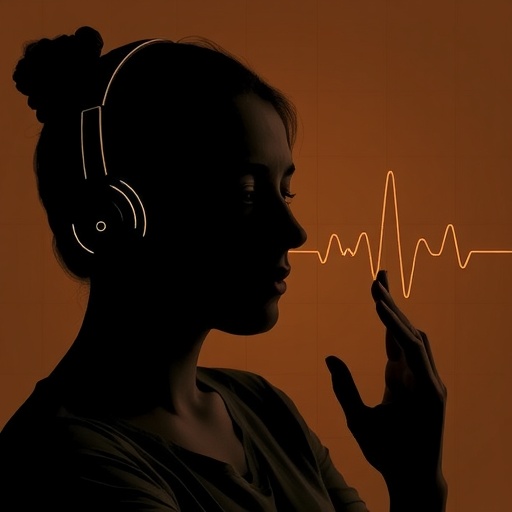In recent years, neuroscience research has taken a fascinating turn as scientists delve deeper into the intricacies of how tactile stimuli influence neural communications. A groundbreaking study led by Watanabe, Kojima, and Otsuru explores the effects of repetitive mechanical tactile stimulation on paired-pulse depression, shedding light on the profound implications for both theoretical understanding and practical applications within clinical settings.
The study investigates two distinct patterns of tactile stimulation—stationary and moving—that are designed to enhance our understanding of how sensory inputs engage the nervous system. The researchers suggest that these patterns stimulate different neural pathways, paving the way for innovative therapeutic interventions targeting neuroplasticity and motor rehabilitation. Such insights open new avenues for enhancing recovery processes in neuro-motor disorders.
At the heart of the investigation lies paired-pulse depression, a well-studied phenomenon in synaptic transmission where two successive stimulations lead to a decrease in the amplitude of the second response. This mechanism is a core aspect of synaptic plasticity, affecting how information is processed within the brain. By exploring how different patterns of tactile stimulation impact this process, the research team aims to unravel the complexities underlying sensory integration and its implications for motor function.
The researchers utilized a rigorous experimental design to assess the effectiveness of stationary versus moving tactile stimuli. Volunteers were subjected to carefully controlled interventions that measured their neural responses through advanced imaging technologies and electrophysiological recordings. This methodological precision is vital, as it enhances the integrity and reproducibility of the findings.
Preliminary results have revealed that stationary tactile stimulation tends to elicit a distinctly different neural response compared to moving patterns. This difference highlights not only the importance of stimulus dynamics but also raises intriguing questions about how the brain prioritizes and processes varying types of sensory input. Understanding these differences could inform therapeutic strategies tailored to individual patient needs in rehabilitation settings.
Moreover, the implications of the findings extend beyond clinical applications, as they may also enrich our understanding of the sensory systems’ role in everyday life. For instance, how we interact with our environment—whether it be through touch, texture, or movement—can significantly influence our cognitive processes and emotional responses. Hence, the broader impact of this research might resonate across multiple domains such as education, occupational therapy, and even architecture.
As the study progresses, the researchers emphasize the significance of feedback mechanisms that could potentially enhance the learning environment for motor skills. By integrating tactile stimuli effectively, they theorize that individuals may experience accelerated learning curves and improved performance in various tasks requiring fine motor skills. Such findings have profound implications for educators and trainers who seek to optimize learning experiences.
In an era where tactile technology is increasingly merging with daily life—think virtual reality and haptic feedback devices—this research positions itself at the forefront of innovation in these domains. By harnessing the principles derived from paired-pulse depression, developers could create more engaging and effective virtual environments mimicking real-world interactions tangibly and intuitively.
However, despite the promising findings, the authors acknowledge several limitations and challenges. The variability among individuals’ sensory processing capabilities necessitates a more nuanced approach in subsequent studies. Individual differences such as previous experiences, age, and even psychological states can significantly influence how tactile stimuli are perceived and processed, which the current study may not fully account for.
In conclusion, the study spearheaded by Watanabe et al. represents a significant stride in understanding the intersection of tactile stimulation and neural transmission. As the field of neuroscience continues to evolve, this work will undoubtedly inspire further investigation into how we can harness sensory inputs to facilitate recovery, enhance learning, and ultimately improve the quality of life for individuals with various neurological conditions.
As researchers publish their findings, the discussion surrounding the implications of tactile stimuli on neural pathways will only grow broader and more nuanced. It provokes thought about how we engage with our surroundings and the potential interventions that could arise from such an understanding. As society advances towards a more integrated approach to health and technology, the insights gleaned from this study encourage exploration into the uncharted territories of sensory influence and neuroplasticity.
This research is not merely a tale of numbers and data; it speaks to the very essence of human experience. The interactions we have with our environment shape who we are, and understanding these interactions at a neurological level may one day lead to transformative practices in how we approach therapy, education, and even community design. The journey of discovery is ongoing, and each piece of research is a vital cog in the larger narrative of human and technological evolution.
Through such endeavors, the bridge between neuroscience and practical application only strengthens, fostering a future where scientific inquiry can tangibly change lives for the better. As Watanabe and colleagues move forward with their research, the scientific community eagerly anticipates the subsequent revelations that will undoubtedly advance our understanding of human sensory interaction.
Subject of Research: Effects of tactile stimulation on paired-pulse depression
Article Title: Effects of repetitive mechanical tactile stimulation interventions with stationary and moving patterns on paired-pulse depression
Article References:
Watanabe, H., Kojima, S., Otsuru, N. et al. Effects of repetitive mechanical tactile stimulation interventions with stationary and moving patterns on paired-pulse depression.
BMC Neurosci 26, 46 (2025). https://doi.org/10.1186/s12868-025-00960-w
Image Credits: AI Generated
DOI: 10.1186/s12868-025-00960-w
Keywords: tactile stimulation, paired-pulse depression, neuroscience, motor rehabilitation, neuroplasticity, sensory integration, tactile technology




